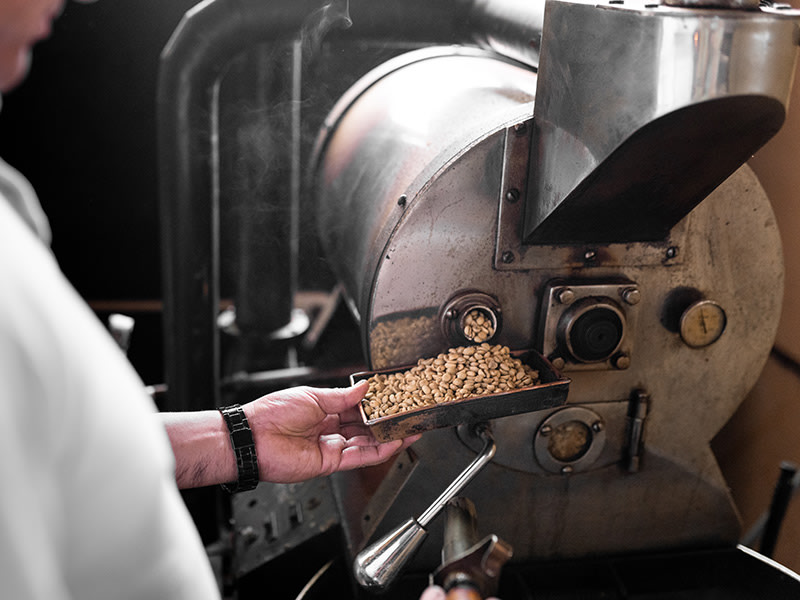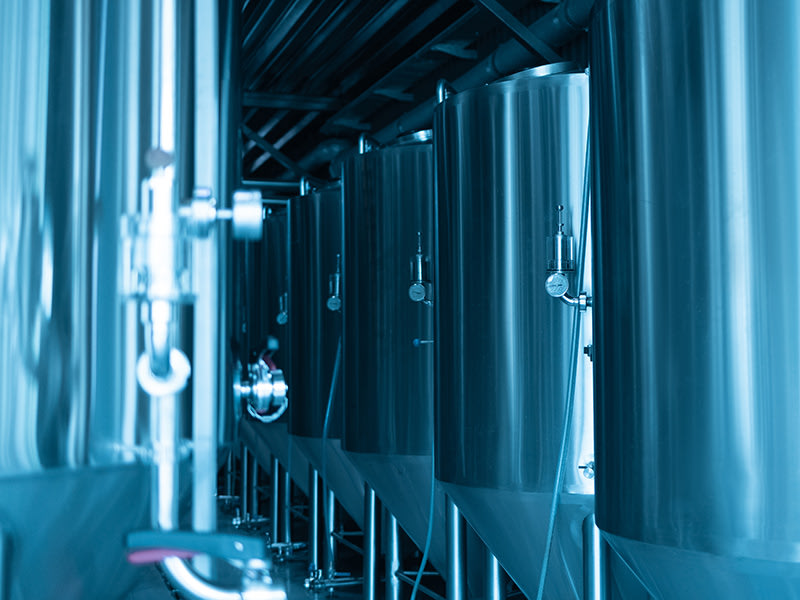Sign In Menu
StoneAgeFood Processing Equipment
![High pressure conveyor belt cleaning in food processing]()
![Cleaning roasters in food processing]()
![Custom high pressure cleaning of tans and vessels]()
![Clean piping systems in food production]()
![Success by working together: equipment manufacturers, service contractors, and asset owners]()
Food Processing Equipment
Custom cleaning with food safety in mind
The cleaning of food processing equipment requires special attention to safety codes and food-handling regulations. These cleaning operations pose several challenges due to the nature of the materials processed, the specialized equipment involved, and the stringent hygiene standards required in the food industry.
Oven Conveyors and Conveyor Belts
Cleaning conveyor belts in food processing presents challenges demanding efficient equipment setups that streamline cleaning and minimize manual labor interruptions.
- Continuous operation: Conveyor belts are often in constant use, which limits the time available for cleaning. Shutdowns for cleaning must be carefully scheduled to minimize production downtime.
- Accessibility: Some parts of conveyor systems may be difficult to access for cleaning, leading to potential hygiene risks if residues are left behind. Equipment that can be set up and left in-place, ready to run whenever needed without a time-consuming set-up and breakdown process each time.
- Manual cleaning: This process can take hours of valuable time, requiring multiple workers spraying down the belt while operations grind to a halt until the work is complete.
Featured solution: Custom Food Processing Conveyor Cleaner
Previously, this project required operators with shotguns to clean the belt, placing them near the high-pressure water in very tight work areas. Depending on the size of the unit, the typical belt cleaning turnaround could take two shifts.
Our automated Conveyor Belt Cleaner is adaptable to match your belt’s speed, with controllable drive and rotational speeds, and tested to meet your belt’s unique requirements. This flexibility ensures optimal performance in any operational setting. The oven is reliably back in operation in one shift.
- Eliminates the need for hazardous, costly manual cleaning
- Pressure ranges from 2-40k psi and wide range of flow configurations
- Multiple levels of automation to fit the plant’s needs and budget


Roasters
Challenges arise from the accumulation of stubborn residues like oils and sugars, requiring meticulous cleaning due to their adherence to surfaces. Additionally, the high temperatures involved demand specialized cleaning methods, making finding tailored solutions for individual equipment setups a daunting task.
- Residue buildup: Roasters often accumulate oils, fats, sugars, and other food residues during the processing of food products. Removing these residues can be challenging due to their viscous nature and tendency to adhere to surfaces.
- Heat resistance: Many roasters operate at high temperatures, which can make cleaning more difficult and time-consuming. Specialized cleaning agents and procedures may be required to effectively clean heat-resistant materials.

Tanks and Vessels
Due to their unique size and shape, tanks and vessels in food processing require specialized solutions to navigate around obstructions with limited accessibility and consideration to strict food-safety standards.
- Interior surfaces: Tanks used for processing and storage can have complex interior surfaces that are difficult to clean thoroughly. Dead spots, corners, and crevices may harbor bacteria and other contaminants if not cleaned properly.
- Cross-contamination risk: Tanks used for different products must be cleaned thoroughly to prevent cross-contamination. Residual traces of one product left in the tank can contaminate subsequent batches and result in recalls and damaged reputation.

Piping Systems
Piping systems pose challenges for cleaning operations because if their narrow passageways and unique shapes, as well as intricate networks of bends while adhering to strict food safety standards.
- Narrow passages: Piping systems often have narrow passages and intricate geometries that can trap food residues and make cleaning challenging. Specialized equipment such as high-pressure sprayers or pigging systems may be required to clean pipes effectively.
- Cross-connections: Complex piping networks may have multiple connections and branches, increasing the risk of cross-contamination if not cleaned properly. Strict protocols for flushing and sanitizing piping systems are necessary to maintain hygiene.
Common challenges across all types of equipment include:
- Selection of cleaning agents: Choosing the right cleaning agents is crucial to effectively remove food residues without compromising food safety or damaging equipment surfaces.
- Water usage: Industrial cleaning processes often require significant amounts of water, which can be costly and environmentally unsustainable. Efforts to optimize water usage and recycling are important.
- Compliance with regulations: The food industry is subject to strict regulations and standards regarding equipment cleaning and sanitation. Non-compliance can result in fines, product recalls, and damage to reputation.
Addressing these challenges requires a combination of proper equipment design, effective cleaning protocols, employee training, and regulatory compliance measures to ensure the safety and quality of food products.
Want to work together on your unique challenge?
Our Solutions team is happy to work with you through the details of your project.
Partnerships that work
The safety and efficiency benefits of automated methods for industrial cleaning demonstrate why these are quickly becoming standards of operation. We believe that successful adoption of automated technologies requires a partnership between servicce providers, asset owners, and manufacturers of waterblasting equipment.
StoneAge Solutions can help asset owners understand the benefits of adopting automated waterblasting solutions and help industrial cleaning service providers improve their effectiveness by successfully engaging plants. We partner with all parties to provide job assessments, on-site plant visits, presentations, and live demonstrations of hands-free, automated equipment.
